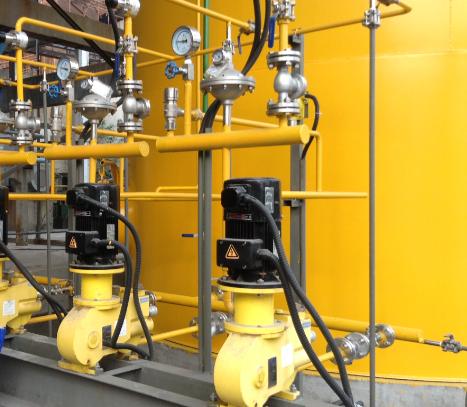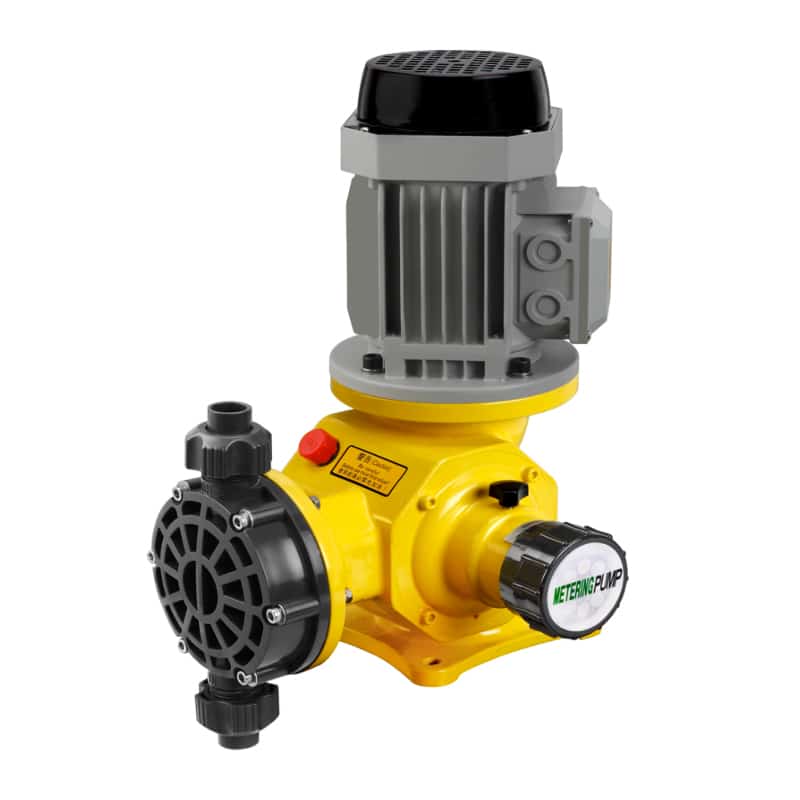Dosing Pump Maintenance

Dosing pumps play a key role in many industries, from water treatment to chemical production and even food processing. However, regular maintenance and servicing are required to ensure that dosing pumps are always running efficiently and consistently.
What are dosing pumps?
A dosing pump is a device used to accurately control the flow or pressure of a fluid. They are typically used in industrial and laboratory applications to transfer various types of liquids or gases. A dosing pump can precisely regulate the output of a fluid as needed, which is important for applications that require precise control of process parameters. These pumps can work on different principles, including piston pumps, screw pumps, gear pumps, etc., but they share the common characteristic of being able to provide a controlled flow or pressure output.

Different Types Of Dosing Pumps Work
Plunger Pump
Principle of operation: Plunger pump through one or more plungers in the cylinder body to do reciprocating motion to achieve the purpose of pumping fluid.
Characteristics: Plunger pumps are typically used in applications that require high pressure pumping, such as water treatment and cleaning equipment. HAOSH HJ-Z dosing pumps are extremely robust and feature a built-in safety diaphragm for outstanding process reliability.

Gear Pump
Principle of operation: A gear pump consists of two or more meshing gears. As the gears rotate, fluid is drawn through the gap between the gears and delivered to the outlet.
Characteristics: Gear pumps are simple in structure, reliable in operation, and suitable for conveying low viscosity liquids, but may leak under high pressure or high temperature.
Diaphragm Pump
Working Principle: When the diaphragm contracts, it generates negative pressure so that the fluid enters the pump body; and when the diaphragm expands, it discharges the fluid out of the pump body.
Features: Diaphragm pumps can effectively separate the pumped fluid from the driving mechanism, and are suitable for conveying liquids that are easily corrosive, volatile, or have solid particles.
The Importance of Dosing Pump Maintenance
- Ensure Operational Stability: Regular maintenance ensures that pump components are in good condition and prevents erratic or interrupted flow due to equipment failure or component wear.
- Ensure flow accuracy: The primary function is to provide precise flow control, especially in applications where precise proportioning or addition of specific chemicals is required, to avoid process problems or product quality issues caused by pump errors.
- Extend equipment life: Regular maintenance can identify and replace worn parts promptly, thus extending the life of the pump and reducing equipment failure and repair costs.
- Reduce Maintenance Costs: Through regular inspection and maintenance, potential problems can be detected and solved in a timely manner, avoiding production interruptions and unnecessary maintenance costs due to equipment failure.
- Improve safety: Dosing pumps are often used to handle a variety of chemicals, pharmaceuticals, or hazardous substances, which can pose safety risks during operation.
How to maintain the dosing pump?
- Regular cleaning: The external surfaces of the dosing pump should be cleaned regularly to prevent the buildup of dust, dirt, or chemicals that can affect the performance and appearance of the pump.
- Check seals: Batch pump seals such as O-rings and sealing rings are susceptible to wear and tear. Regularly check and replace worn seals to prevent leaks or erratic flow.
- Calibration column: The accuracy of the calibration column is critical. Periodic calibration ensures that its output flow or pressure is consistent with the expected value..
- Check valves and lines: Regularly check the pump’s inlet and outlet valves, as well as the lines connected to the pump, to ensure that the valves are sealed and the lines are clear to prevent clogging or leaking.
- Lubricate parts: Add the proper amount of lubricant periodically to minimize friction and wear.
- Checking electrical parts: Regularly check electrical parts such as motors, cables, switches, etc. to ensure that they are working properly, and pay attention to whether there are any electrical safety hazards.
Difference Between Dosing And Metering Pumps
Both dosing and metering pumps are devices used to control the flow of fluids, but there are some differences between them:
Dosing Pump
- Dosing pumps are primarily used to transfer or inject fluids at a fixed, predetermined rate. Their primary function is to accurately control the output of a fluid, and they are often used in applications that require precise proportioning or addition of specific agents or chemicals.
- Dosing pumps typically control the rate of fluid delivery by regulating the movement of a piston or plunger with a high degree of accuracy and stability.
- They are used in a wide range of applications, including water treatment, chemical processing, pharmaceuticals, laboratories, and more.
Metering Pump
- Metering pumps are also used to control fluid flow, but their main function is to accurately regulate the output pressure or flow rate of the fluid as needed. Unlike dosing pumps, they do not usually have a fixed output rate, but can be adjusted as needed.
- Metering pumps typically achieve flow rate regulation by adjusting the pump discharge or discharge pressure to accommodate process changes or changes in demand.
- Metering pumps are commonly used in applications where the flow rate needs to be adjusted according to process parameters, such as chemical treatment, spraying, flushing, etc. in industrial processes.
Summary
The maintenance of dosing pumps is crucial, not only to extend the life of the equipment but also to ensure the stability and efficiency of the production process.
HAOSH is a pump manufacturer that specializes in innovation research and development. They are constantly introducing new products and technologies to meet the ever-changing market demands. The pump products they offer include solenoid dosing pumps, diaphragm metering pumps, safety valves, etc., which are widely used in water treatment, petrochemical, pharmaceutical and other industries in conjunction with dosing. If you have any questions about dosing pump maintenance or need technical support, please contact our professional team, we are ready to help you!
